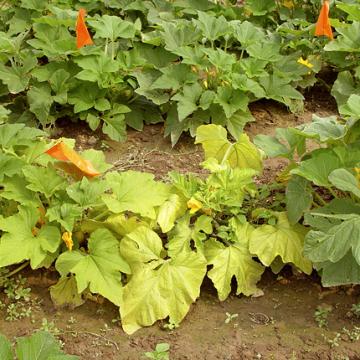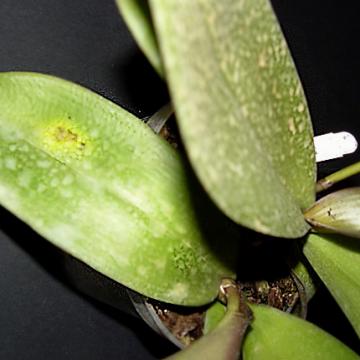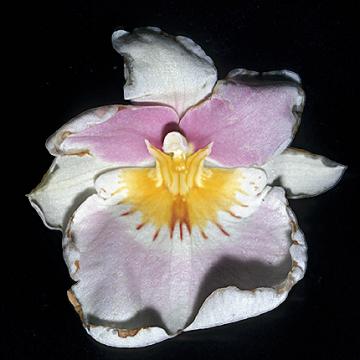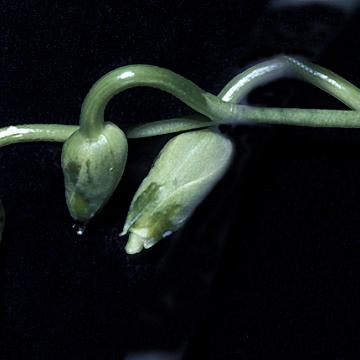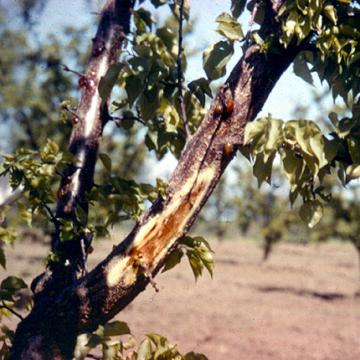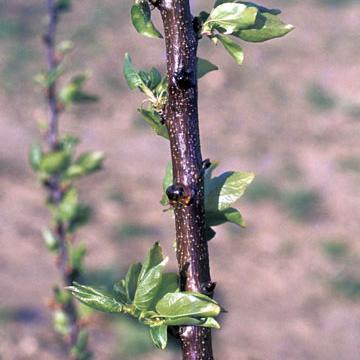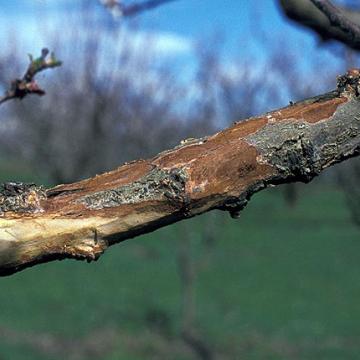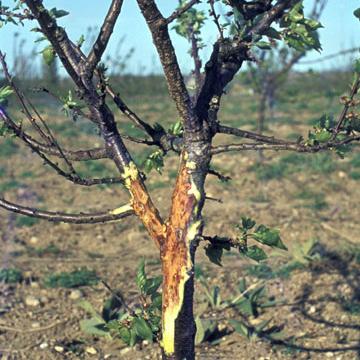DISEASE: Aster yellows
HOST: Squash
Diagnostic characteristics for the disease are yellowing of young leaves, proliferation of secondary shoots, and rigid erect habit. Leaves are misshapen and smaller than normal and have stiff, thick laminae.
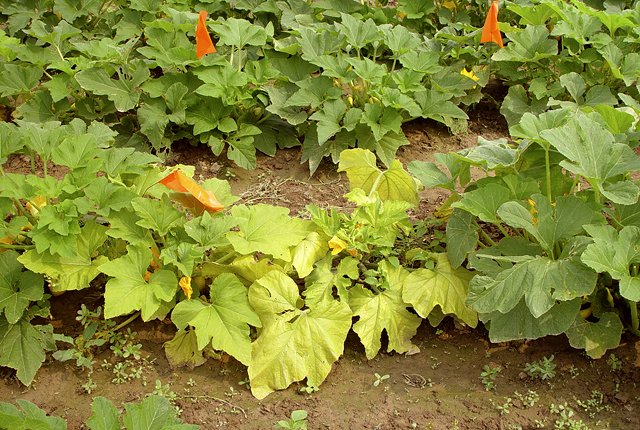
Aster yellows | Squash
DISEASE: Aster yellows
HOST: Squash (Cucurbita sp.)
PATHOGEN: 'Candidatus Phytoplasma asteris'
PATHOGEN SYNONYM: Phytoplasma Aster yellows group
SOURCE: S. Miller
DISEASE: Bacterial brown rot
HOST: Orchid
Phalaenopsis orchid with yellowish brown spot on leaf (left), an early stage of disease.
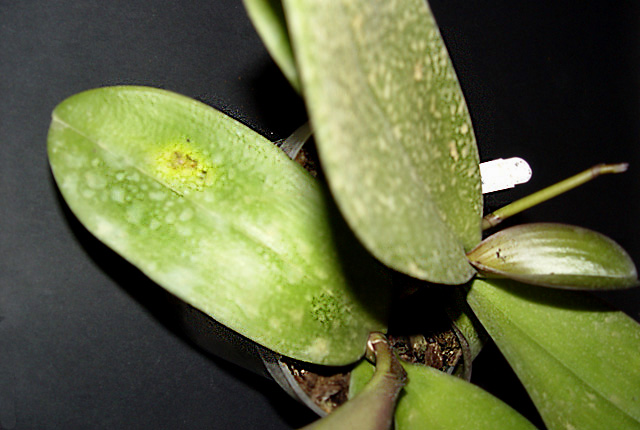
Bacterial brown rot | Orchid
DISEASE: Bacterial brown rot
HOST: Orchid (Phalaenopsis sp.)
PATHOGEN: Acidovorax cattleyae
PATHOGEN SYNONYM: Acidovorax avenae subsp. cattleyae
SOURCE: R. McMillan
DISEASE: Bacterial brown rot
HOST: Orchid
Leaves of Phalaenopsis orchid with advanced stage of decay.
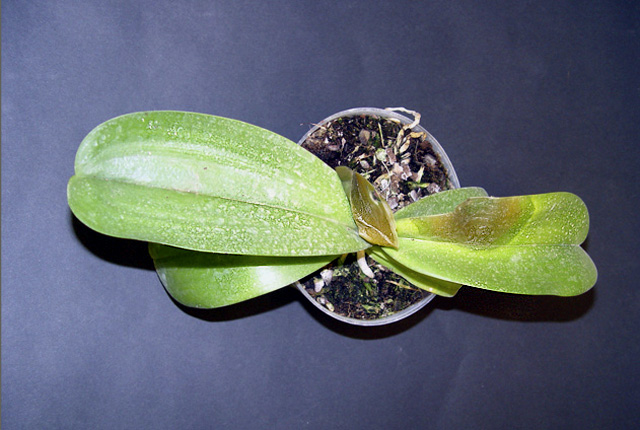
Bacterial brown rot | Orchid
DISEASE: Bacterial brown rot
HOST: Orchid (Phalaenopsis sp.)
PATHOGEN: Acidovorax cattleyae
PATHOGEN SYNONYM: Acidovorax avenae subsp. cattleyae
SOURCE: R. McMillan
DISEASE: Bacterial bud and petal blight
HOST: Orchid
Miltonia orchid with brownish necrotic areas around edges of flower petals.
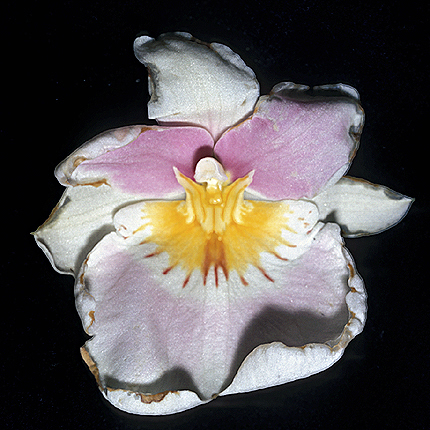
Bacterial bud and petal blight | Orchid
DISEASE: Bacterial bud and petal blight
HOST: Orchid (Miltonia sp.)
PATHOGEN: Acidovorax cattleyae
SOURCE: R. Raabe
DISEASE: Bacterial bud and petal blight
HOST: Orchid
Miltonia orchid with diseased water-soaked flower buds.
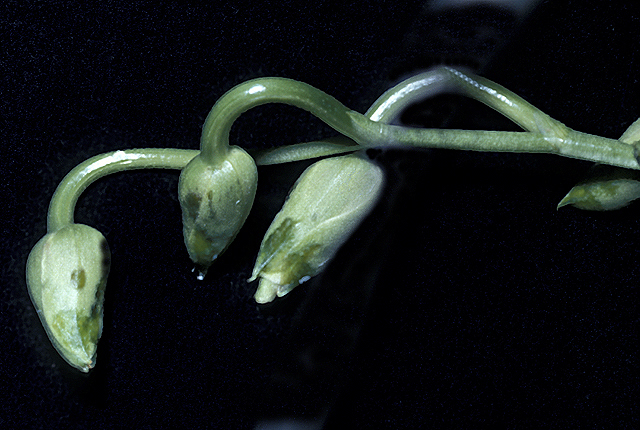
Bacterial bud and petal blight | Orchid
DISEASE: Bacterial bud and petal blight
HOST: Orchid (Miltonia sp.)
PATHOGEN: Acidovorax cattleyae
SOURCE: R. Raabe
DISEASE: Bacterial canker and blast
HOST: Apricot
Apricot with typical reddish brown-discolored tissues beneath the bark and gumming around infected areas.

Bacterial canker and blast | Apricot
DISEASE: Bacterial canker and blast
HOST: Apricot (Prunus armeniaca)
PATHOGEN: Pseudomonas syringae pv. syringae
SOURCE: S. Sampson, M. Shurtleff
DISEASE: Bacterial canker and blast
HOST: Apricot
Young infected twig with droplets of bacterial ooze on stem.
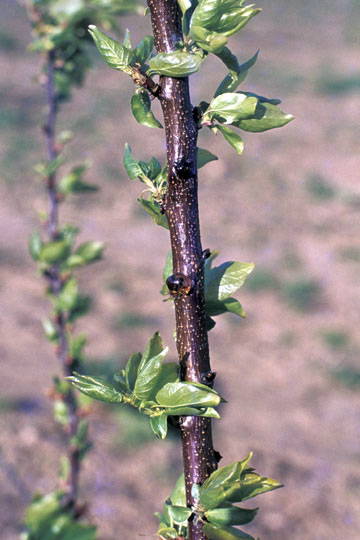
Bacterial canker and blast | Apricot
DISEASE: Bacterial canker and blast
HOST: Apricot (Prunus armeniaca 'Moorpark')
PATHOGEN: Pseudomonas syringae pv. syringae
SOURCE: J. Young
DISEASE: Bacterial canker and blast
HOST: Apricot
Bacterial canker has many symptoms. Typical symptoms are brown, sometimes reddish brown, internal tissues and rough, cracked bark.
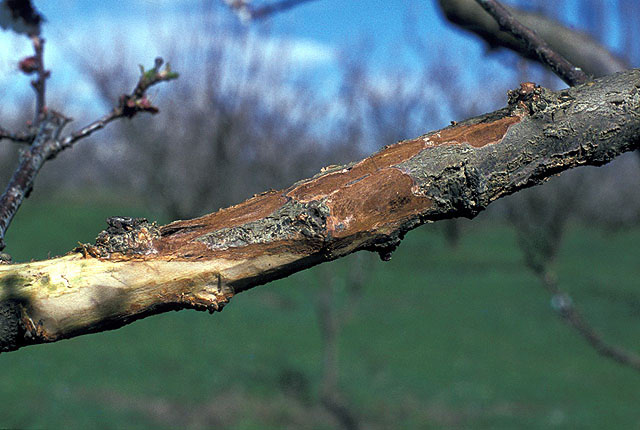
Bacterial canker and blast | Apricot
DISEASE: Bacterial canker and blast
HOST: Apricot (Prunus armeniaca 'Moorpark')
PATHOGEN: Pseudomonas syringae pv. syringae
SOURCE: J. Young
DISEASE: Bacterial canker and blast
HOST: Apricot
Infected apricot with sparse foliage (some twigs with no foliage) and a discolored area exposed where bark was removed.
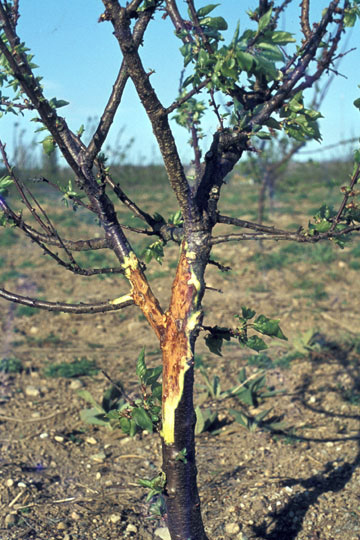
Bacterial canker and blast | Apricot
DISEASE: Bacterial canker and blast
HOST: Apricot (Prunus armeniaca 'Moorpark')
PATHOGEN: Pseudomonas syringae pv. syringae
SOURCE: J. Young


